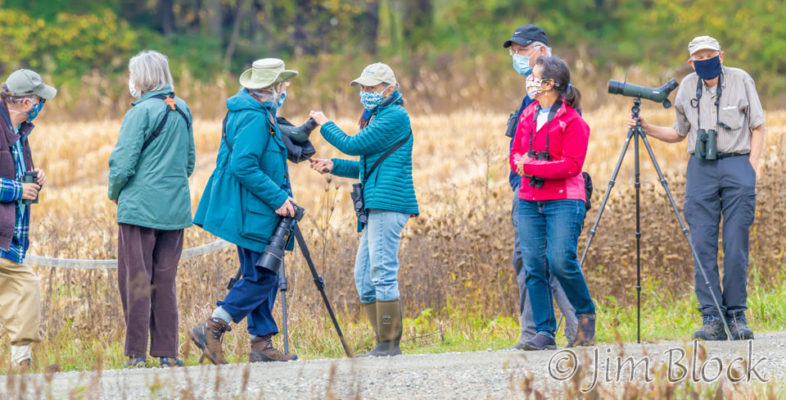
A familiar site in Norwich (and elsewhere) during 2020: birders wearing masks. This group was watching the cooperative Western Kingbird at Campbell Flat, September 2020. © Jim Block https://www.jimblockphoto.com/
Birders in Norwich may never have another year quite like 2020. The combination of phenomenally good birding fortune, diligent searching, and, yes, a pandemic that kept us all local added up to a birding extravaganza that may never be equaled, let alone surpassed. Coming off the inaugural Norwich Bird Quest in 2019, when we exceeded our self-imposed, but ambitious goal of 175 species within town borders—ending up with 177 species and 1,303 Vermont eBird checklists submitted by 17 birders—we challenged ourselves in 2020 with the daunting task of finding 180 species via 1,500 checklists from at least 20 birders. Many of us thought such aspirations were simply pie in the sky…
We proved our skeptics (including yours truly) dead wrong. The year started inauspiciously with the annual Hanover-Norwich Christmas Bird Count on January 1, when hardy teams of birders racked up 23 species in town. The 2020 tally bumped along quietly through February, when our total stood at 42 species. March brought an unfolding pandemic and the return of waterfowl; by month’s end, we were at 68 species, with Long-tailed Ducks below the Ledyard Bridge being a “new” species for Norwich. Then came April—spring migration picked up steam, as did sheltering-in-place Norwich birders. Starting with an Eastern Meadowlark and ending with a Northern Parula, we added 34 new species, rounding the corner into May at 102, with highlights being a Black-crowned Night-Heron (a rare migrant in the Connecticut River Valley) at Kendall Station, Caspian Tern at the newly-crowned eBird “hotspot” Pompy Farm Oxbow, and Vesper Sparrow (also at the Oxbow). While impressive, our tally lagged 3 species behind 2019’s on the same date.
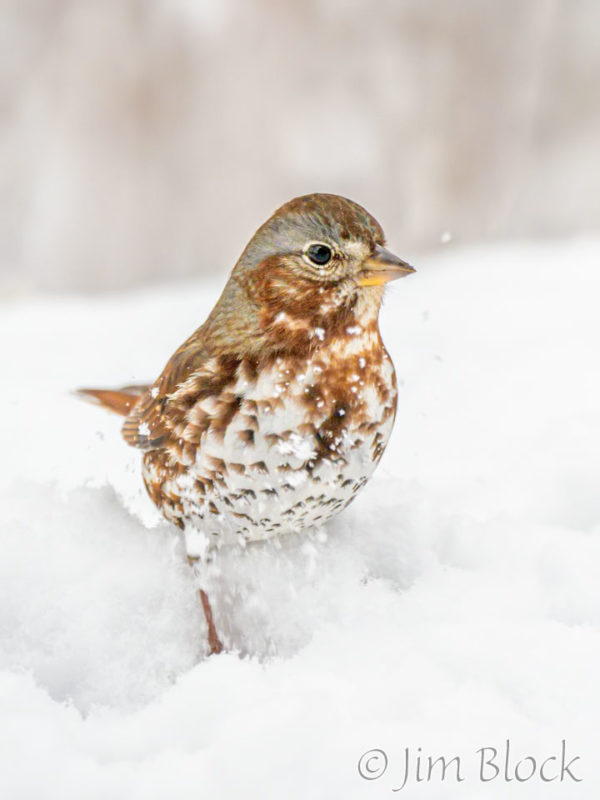
An early migrant Fox Sparrow provided a welcome sight to Norwich birders in late March, and a harbinger of avian diversity to come. © Jim Block https://www.jimblockphoto.com/B
On the heels of a long winter and unusually cold early spring, May lived up to its reputation as the zenith for outdoor-starved Norwich birders. It was, quite simply, an epic month, as we added no fewer than 60 species to the 2020 Quest. And, diversity was staggering, with 16 warblers making their 2020 debut and several exceptional finds that included 5 species not documented in 2019: Virginia Rail, Common Gallinule, Snowy Egret, Bonaparte’s Gull, and Eastern Whip-poor-will.
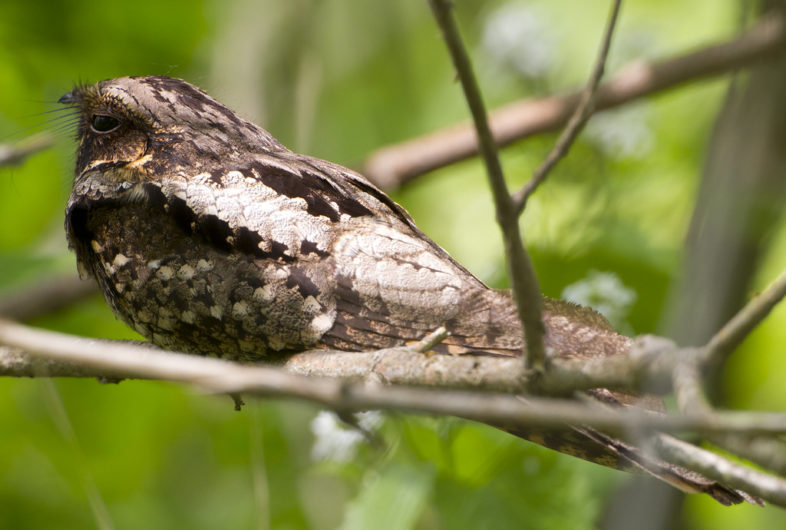
A calling Eastern Whip-poor-will in Warner Meadows at dusk on May 26 was apparently a transient, as it was not heard on subsequent nights. This nocturnal “goatsucker”, a member of the nightjar family that includes our more familiar Common Nighthawk, has declined dramatically throughout its North American breeding range and is now Threatened in Vermont. © Laura Gooch / Creative Commons 2.0
Surprisingly, however, our tally of 162 species on May 31 still fell short of 2019’s 164 on the same date. Even with 7 months of birding ahead, 180 species seemed like it might be an unattainable stretch…
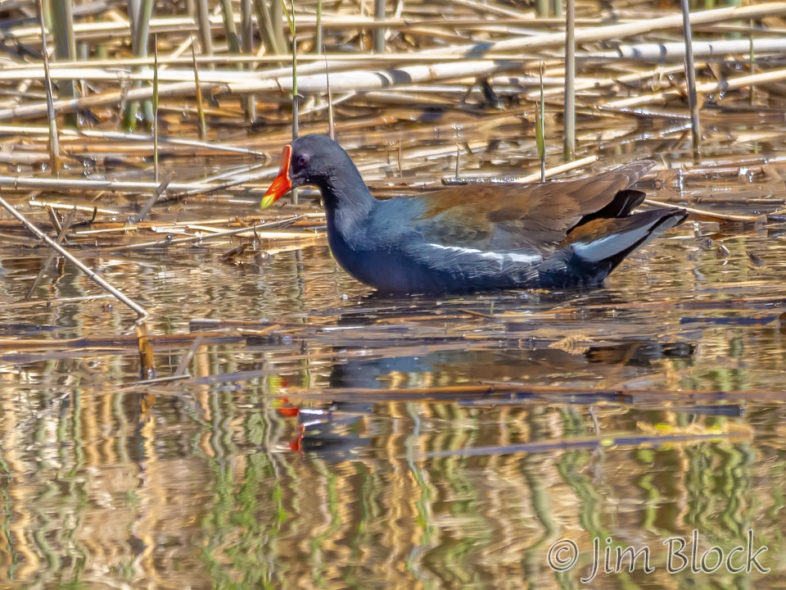
A dapper (and unexpected) Common Gallinule at Kendall Station posed obligingly for many birders over several days in early May. © Jim Block https://www.jimblockphoto.com/B
Undeterred (and still birding locally thanks to COVID), Norwich birders pulled out all the stops during the rest of 2020, aided by an abundance of good luck. As expected, June through August found us in the birding doldrums, though we added several key species with Marsh Wren, Yellow-billed Cuckoo and Yellow-belled Flycatcher, narrowing the gap to a mere single species from our August 31, 2019 total of 169. And then, glorious September ushered in fall migration, beginning a series of avian discoveries that catapulted us on an unstoppable trajectory towards our goal.
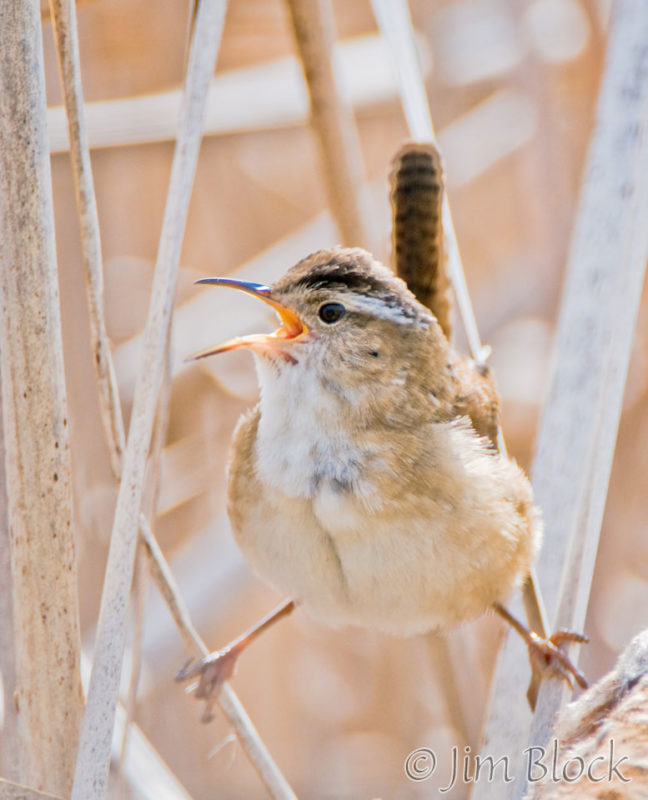
A vociferous Marsh Wren (not found in Norwich during 2019) occupied a territory in the cattails at Pompy Flats during summer 2020. © Jim Block https://www.jimblockphoto.com/B
September’s most notable find was a rare Dickcissel at Pompy Fam Oxbow, one of 2 or 3 individuals that appeared there during the course of autumn. This prairie-breeding songbird is known to stray eastward in fall, but no one had ever recorded the species in Norwich. Adding Philadelphia Vireo, Cape May Warbler, Swainson’s Thrush, and Rusty Blackbird—plus two free-ranging birds that may not have been wild-reared, Northern Bobwhite and Ring-necked Pheasant (we can quibble about whether those should be included in our final total…)—brought us to 175 species at month’s end. We had a lead over 2019 (172 on 9/30) that would not not be relinquished.
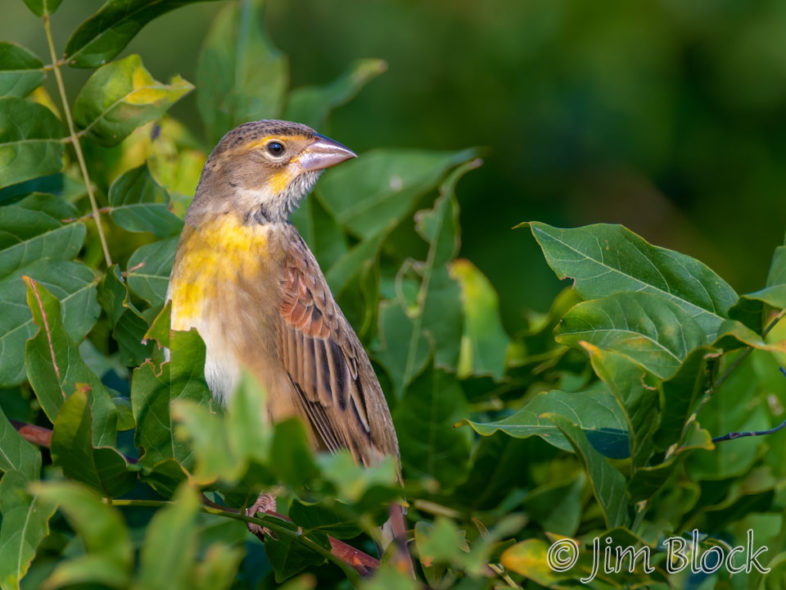
A rare vagrant Dickcissel (2 or 3, actually) afforded many birders exceptional views at Pompy Farm Oxbow during September and October of 2020. © Jim Block https://www.jimblockphoto.com/B
The final 3 months of 2020 brought both quantity and quality, starting with arguably the year’s biggest surprise: a Western Kingbird that put on a stellar show at Campbell Flat for 5 consecutive days (see previous blog post on this rarity). In quick order we added another 5 species not seen in Norwich during 2019 (or ever): Black Scoter, Surf Scoter, Common Eider (a Vermont first for many of us), Sora, and Nelson’s Sparrow. As November arrived, we had eclipsed our audacious goal of 180 species, with 182!
Birders aren’t exactly known for their restraint. What, stop while we’re ahead? Never! It turns out that November and December had plenty to offer Norwich birders, with a northern finch “invasion” that netted several new species—Pine Grosbeaks, White-winged Crossbills, Common and Hoary Redpolls (the latter a “lifer” for many), plus Bohemian Waxwings (OK, not technically a finch…). One final surprise on December 14 was a stunning male Redhead on the Connecticut River. And, rounding out an unforgettable birding year, a hooting Great Horned Owl at 5 am on New Year’s Eve Day notched our final new tally and brought us to 190 species!
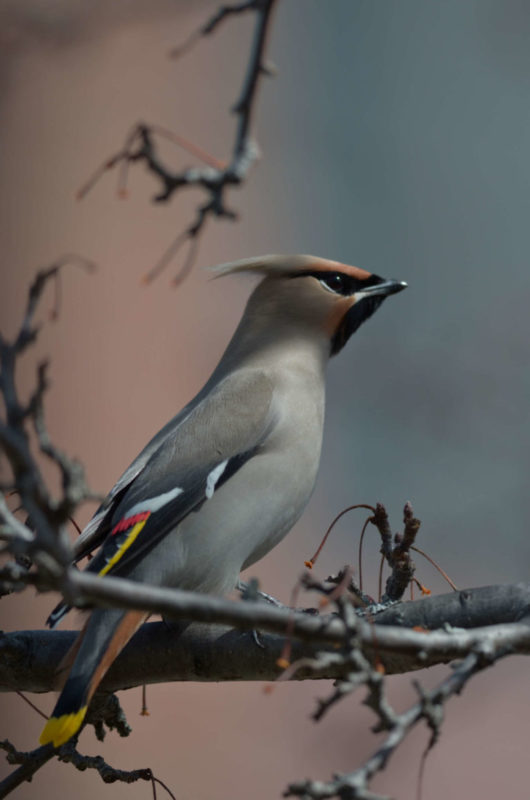
A Bohemian Waxwing that appears to have consumed all the crab apples in sight. This nomadic species sometimes appears in impressive numbers in the Northeast, with flocks numbering in the hundreds. This winter, Norwich and the Upper Valley have so far seen just a smattering of these elegant birds. © Nathaniel Sharp
So, what can Norwich birders possibly do for an encore in 2021? While it seems nearly impossible that the stars could ever align again as they did in 2020—thanks to a constellation of many eager eyes and ears, a pandemic that kept people close to home, an invasion of northern finches, and just plain extraordinary luck—we’ve nevertheless set our sights higher, just for fun. It’s all about setting a goal, challenging ourselves, enjoying the natural world with others, and exploring. Let’s document 195 species in Norwich, submit together 2,500 eBird checklists (2,216 from 22 birders in 2020 was truly impressive), and find at least 5 species not recorded in either 2019 or 2020. My top dozen: Tundra Swan, Black-bellied (or American Golden) Plover, Black Tern, Red-throated Loon, Eastern Screech-Owl, Red-headed Woodpecker, White-eyed Vireo, Purple Martin, Gray-cheeked/Bicknell’s Thrush, Yellow-headed Blackbird, Connecticut Warbler, Blue Grosbeak. These are all well within the realm of possibility, but we need to get busy!
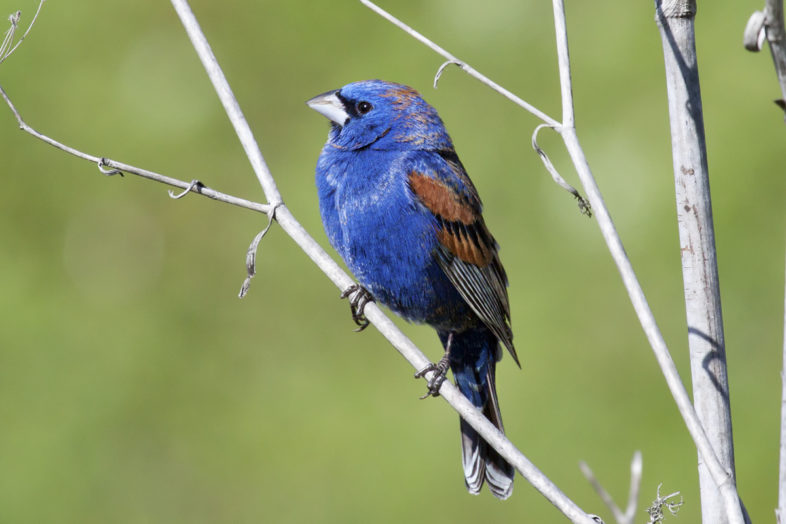
A male Blue Grosbeak, never before recorded in Norwich and only documented 7 times in Vermont, is a distinct (if implausible) possibility for the Norwich 2021 Bird Quest. © Bill Bouton / Creative Commons 2.0
https://vtecostudies.org/norwich-quest-2020/
